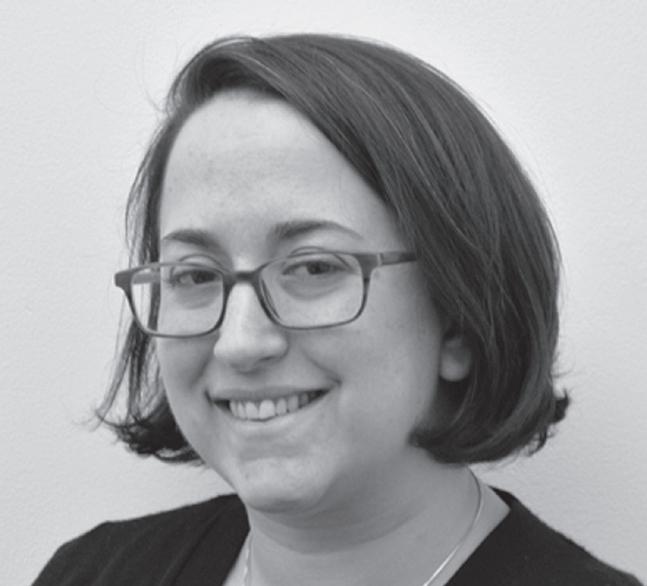
3 minute read
Getting to Know Rabbi Jen Gubitz (page
Getting to Know
RABBI JEN GUBITZ
It has been our great honor to welcome Rabbi Jen Gubitz to the clergy team and our congregation. Her work with The Riverway Project, Engage@TI (small groups), and Introduction to Judaism classes and programs have already elevated and invigorated what we do. We asked her some questions to get to know her better.
For the past four years, you have served Temple Shir Tikva in Wayland, Massachusetts. You have had a very special relationship with that congregation’s cantor, Hollis Schachner. Why did you ask her to install you?
Hollis is a supremely talented Cantor, with a beautiful voice that truly parallels her kindness, humor, and pastoral gifts. Hollis and I spent a great deal of time together the past four years. We often shmoozed and drank coffee during which she mentored me, listened to me, and modeled for me ways to approach situations. Most special, we sang together often.
What has surprised you so far about Temple Israel?
I am constantly surprised by how many ways we are connected and involved within the community and beyond it. The amazing talent of our congregants and staff continues to impress me. I am awed by the thought leadership of my clergy colleagues and the energy and curiosity for Jewish living by the Temple Israel community. Also, it amazes me how committed TI families are through many generations. I had hoped Temple Israel would be vibrant, but I never realized just how bright it would be.
What is a text that influences your thinking about your rabbinate?
One of my favorite midrashim is about the first night Adam and Eve spent outside of the Garden of Eden. Sitting in the dark, they experience what is called—Bein Hashmashot— which means “between two sunsets”. They are in a liminal moment—a moment which most of us are in all the time— as we are always between one thing and the next, standing on thresholds exiting and entering and journeying from different moments and stages in life, they are afraid and fear what will happen. But they create fire and subsequently the ritual of Havdalah is attributed to Adam. The fire/light he creates sends this tremendous message of finding light and hope in dark moments.
What have you found so far in the three months you have been here?
Most of what I imagined and hoped for is actually true. I was very proud to lead High Holy Days with everyone. It was overwhelming in a wonderful way when Rabbi Zecher invited congregants in the sanctuary service up to the bimah for Ne’ilah and many came forward! There was a power I had not felt before in the arc of the High Holy Days when we were surrounded on the bimah by everyone. I was equally grateful to the administrative and maintenance staff who made it logistically possible for what felt like transformational work to take place. I also really love leading the Riverway Project and am grateful for the hard work by Rabbi Soffer before me. Soul Food Friday is actually as good as everyone says, and the participants buck the trends of statistics of Jewish millennial engagement.
What do you want people to know about you that they may not yet know?
I was an English major, and seriously considered pursuing graduate work in American Jewish Literature because I love getting lost in stories. As a result, writing sermons is a really important spiritual practice for me. I love poetry, creative writing, and puns. I grew up in a home where tremendous emphasis was placed on the value of fine and performing arts and Jewish values. My parents always invited the stranger, the orphan, and the widower to our Shabbat table —which I resented as a teen—but grew to understand and value as I grew up. Some of my first Jewish memories are playing in the choir loft while my Bubbe rehearsed or sang in the choir. Those roots drew me to rabbinic life. My first concerts were Sharon, Lois & Bram; and Debbie Friedman! These experiences plus Jewish summer camp are the roots of my rabbinate.



